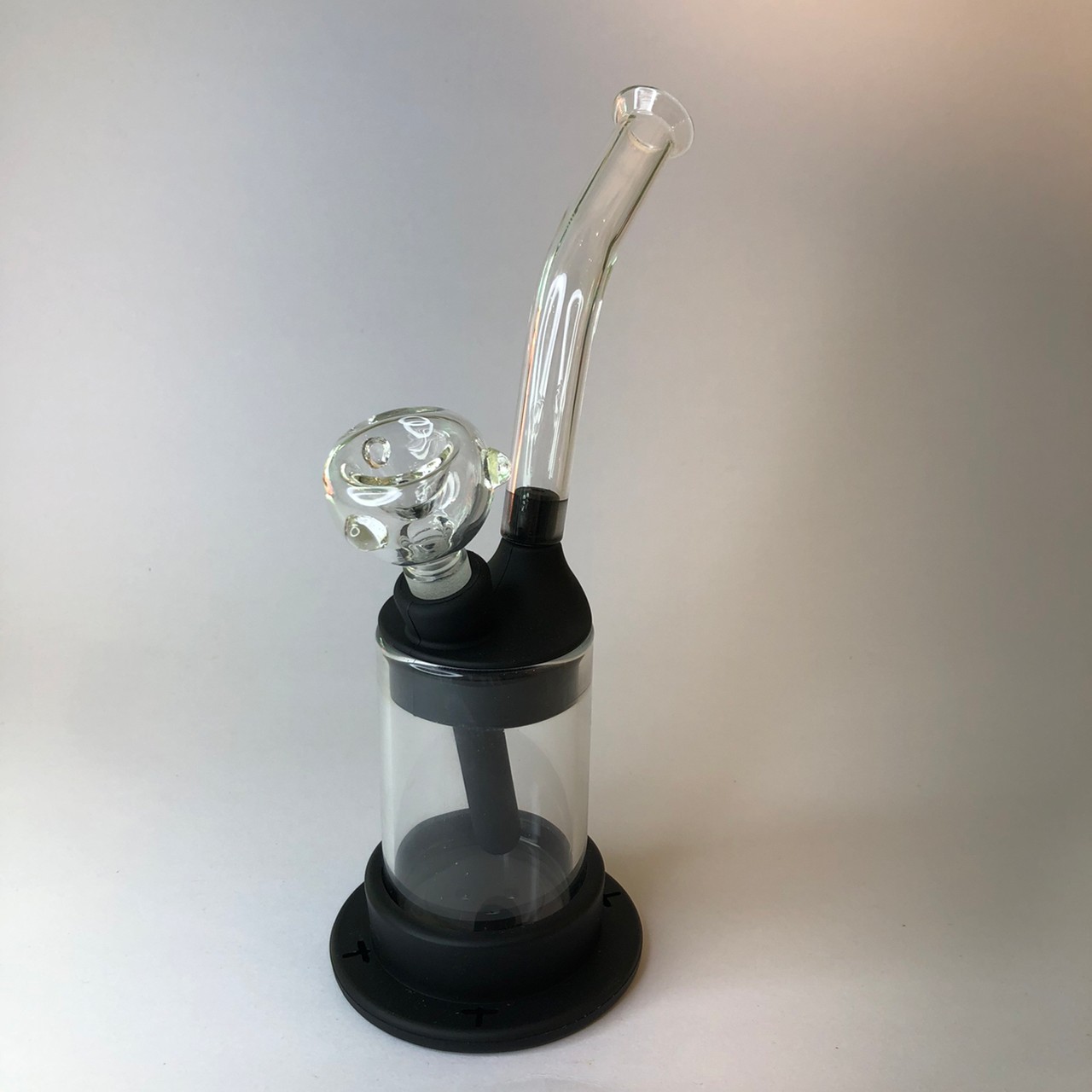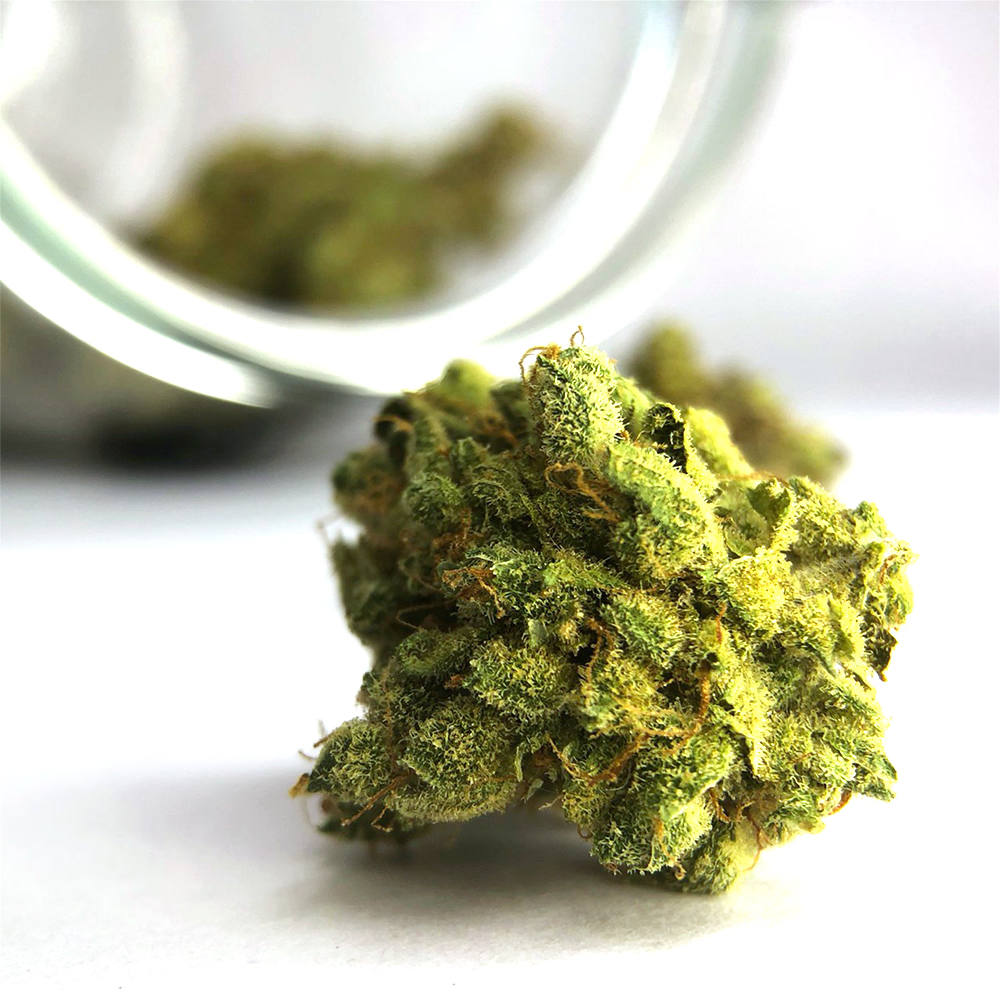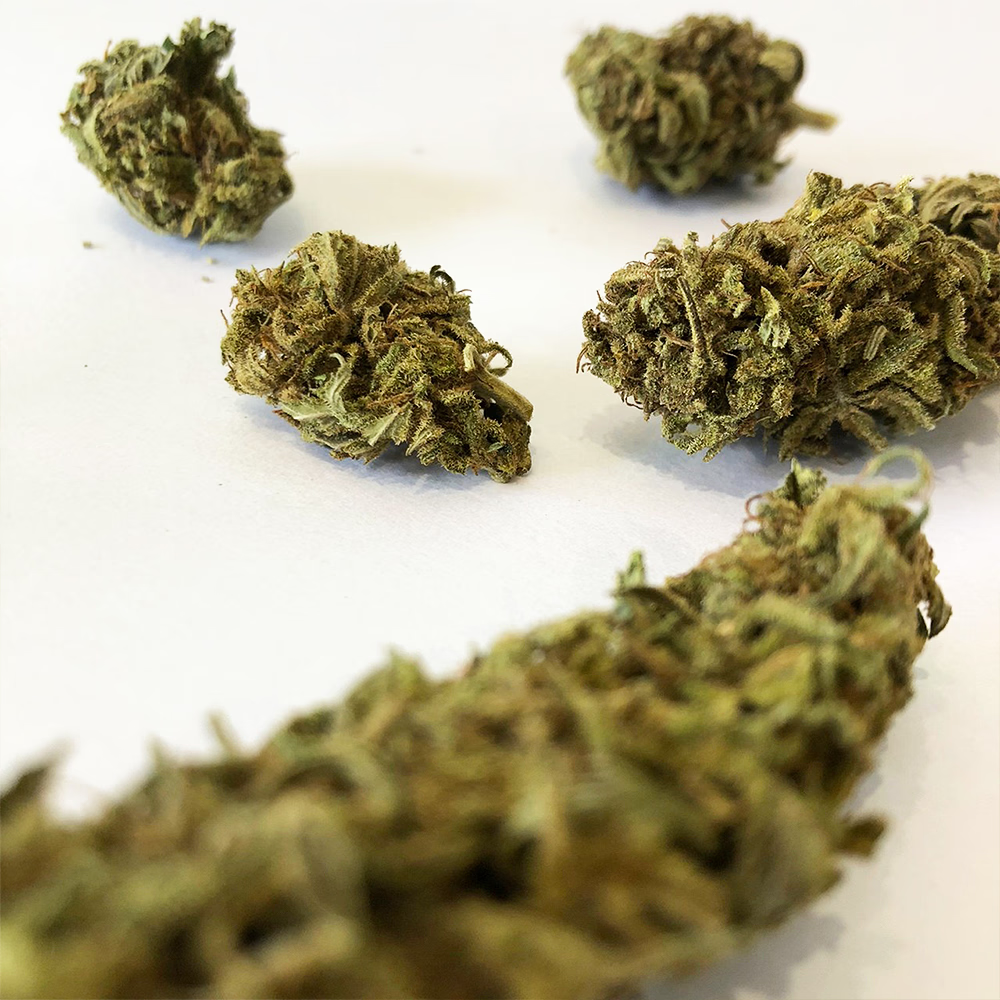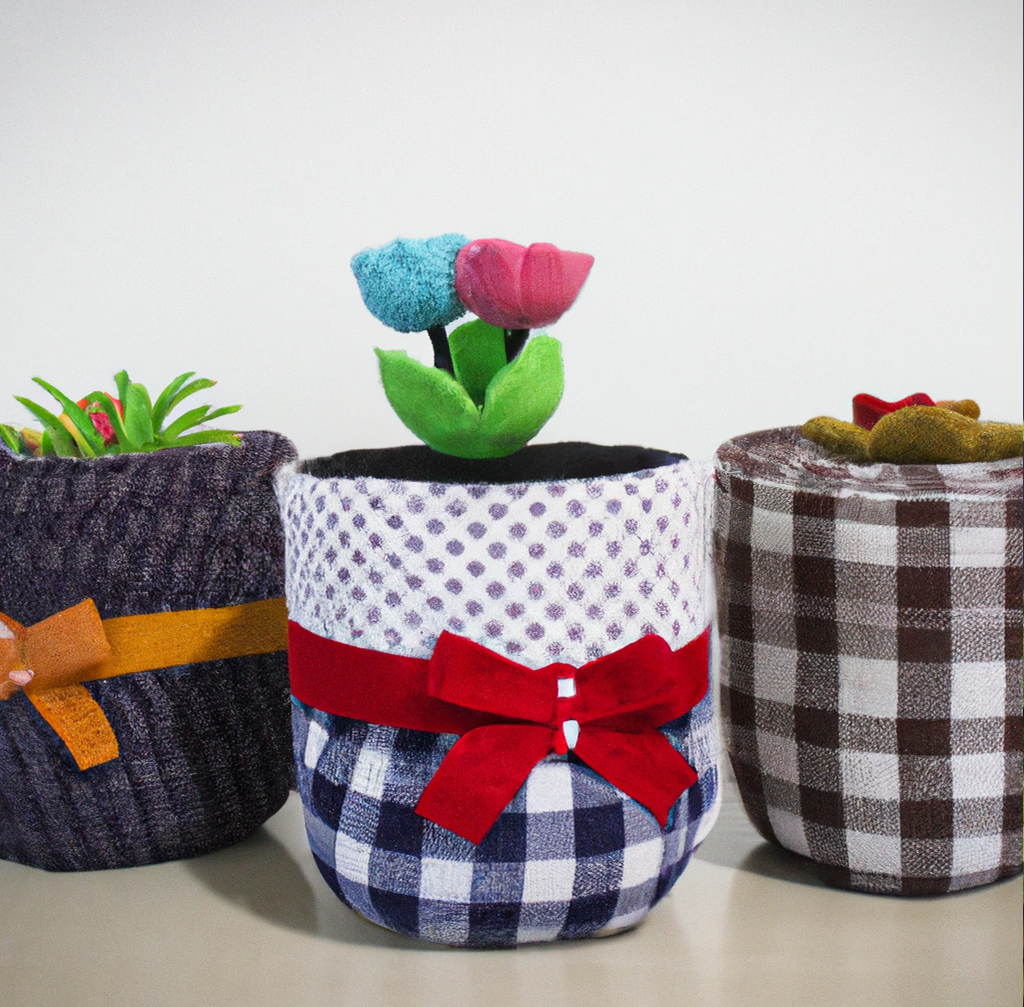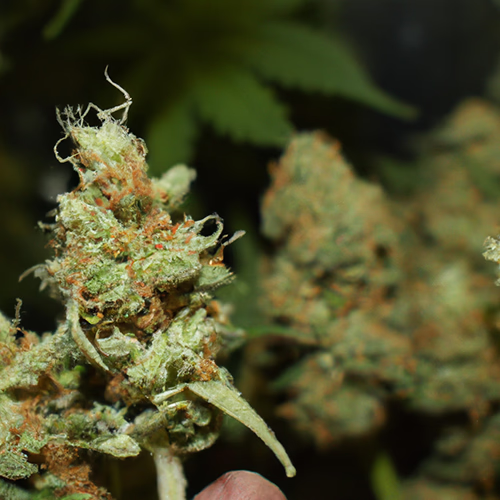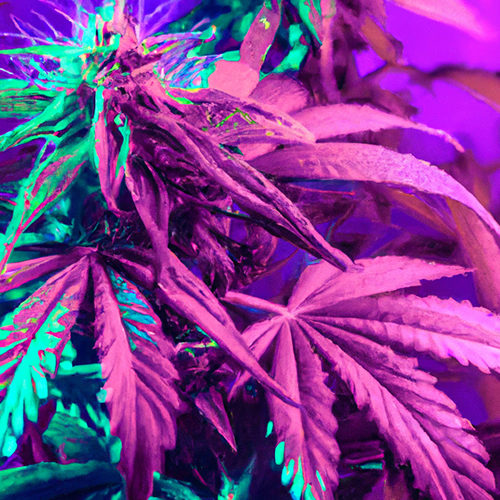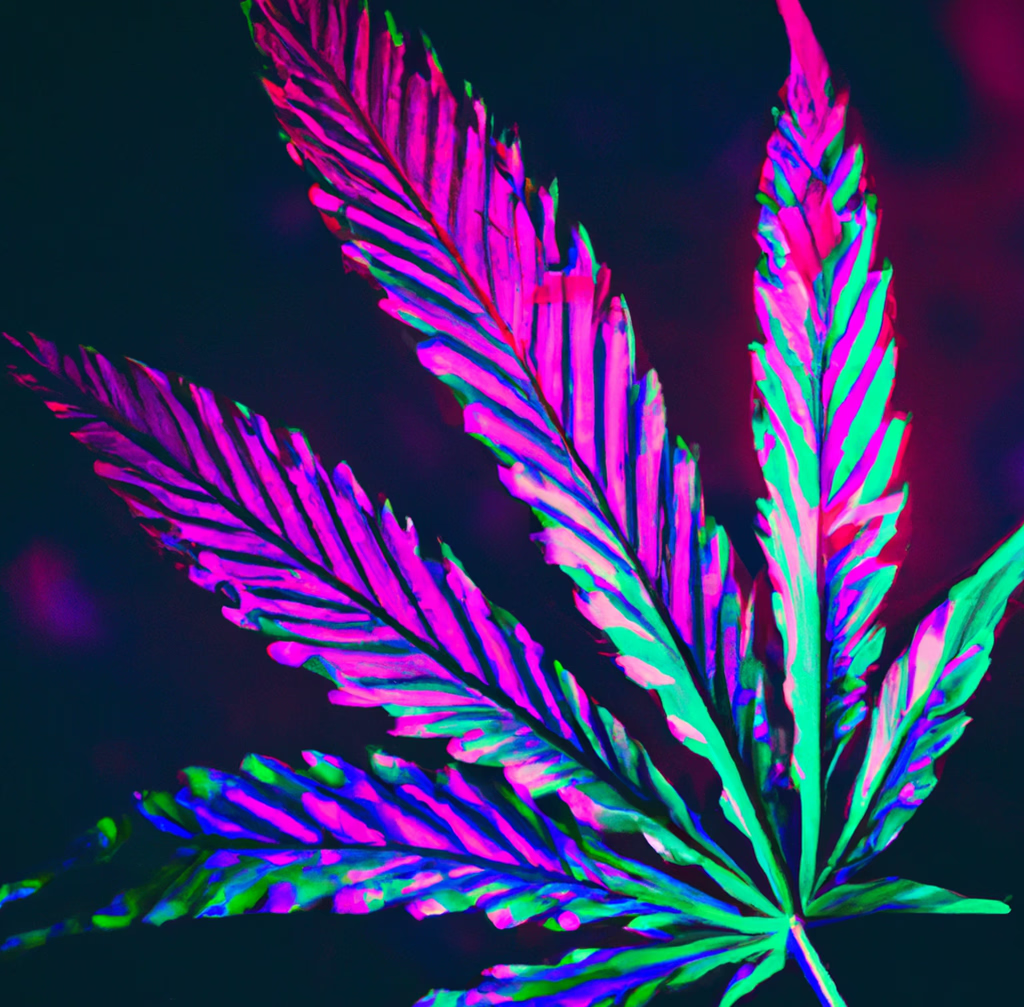Tips for Growing Cannabis: A Guide to a Successful Harvest
Understanding the Basics of Growing Cannabis
If you're interested in growing cannabis, there are some basics that you should understand before getting started.
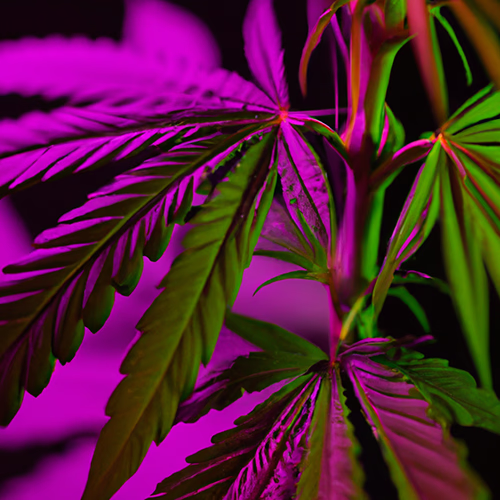
Cannabis cultivation can first seem frightening, but with the correct knowledge and tools, it is feasible to grow a robust crop of marijuana plants successfully. To help you start your growth on the right foot, we will go through the fundamentals of weed growth in this article.
It is crucial first to become familiar with the two primary varieties of cannabis, indica, and sativa. Sativa plants are tall and narrow. In contrast, indica plants are frequently short and bushy. If you want to customize your experience or the effects of smoking or eating the plant material, later on, investigate the quantities of THC (tetrahydrocannabinol) and CBD (cannabidiol) in advance.
The next step is determining how much area your grow operation will require. If you've never grown marijuana before, starting small is advisable. Many indoor growers choose two-by-two-foot locations to comfortably put one or two plants without overloading them. If you want to grow plants outdoors, you'll need extra space depending on the number of plants you want to grow and your environment. Always check your local laws to see if gardening outdoors is legal where you live.
Select an appropriate place to grow setup and then pick whether you want to put seeds or clones in soil or hydroponic media. Each offers unique benefits, such as managing pH levels in hydroponics versus increased water retention with soil mediums. Please find out more about both mediums before deciding which is ideal for your needs;
Since most people are accustomed to handling dirt in the home, starting with soil may be easier for new growers. Still, those seeking greater control over their harvests may find tremendous success with hydroponics.
Knowing these cannabis cultivation fundamentals can help you have a fruitful harvest in the future. Keep up with any changes in local laws governing growing if necessary, and remember that knowledge truly is power when it comes to beginning to produce high-quality goods for either recreational or medicinal purposes. Good luck, fledgling gardeners.
How to Choose the Right Cannabis Seeds for Your Needs
With so many cannabis strains and variations to choose from, finding the best cannabis seeds for your requirements can be a challenging endeavor. But with the correct information and understanding, you may make a choice that will help you get the outcomes you want. Consider the following advice while choosing A Guide cannabis seeds:
Consider Your Climate: Different cannabis plant varieties thrive in various climates. Kings are critical. Knowing your region's climate will help you narrow down your option because certain strains require higher humidity. In contrast, others require. Choosing a theme appropriate for your environment is crucial whether you intend to grow indoors or outdoors—lower temps.
Think About THC Versus CBD Content: It's essential to select a seed that offers the desired cannabinoid content depending on the effects you want. High levels of THC (tetrahydrocannabinol) produce psychoactive effects, whereas high levels of CBD (cannabidiol) are known for their therapeutic benefits without having any psychoactive effects.
Choose Autoflower or Feminized Seeds: When time or space is limited, autoflowering seeds are the best option since they grow more quickly and with less light than classic photoperiod plants. However, their yields are typically lower than regular, feminized seeds, which take longer but produce more. Before choosing this choice, it's crucial to know your requirements. Both offer benefits and drawbacks depending on the situation, such as time or space limits or a preference for a certain quality-to-quantity yield ratio.
Research Genetics & Breeders: Before buying anything online or in person from stores/dispensaries, etc., do extensive research on breeders to verify quality genetics and avoid any potential problems from bad seeds. If feasible, seek recommendations from people with a good history with a particular breeder; this will give you better peace of mind when investing in new genetics.
Pick A Strain For Its Effects & Aroma: Last but not least, rather than relying solely on appearance, choose a strain based on its aroma and effect profile. Read online evaluations of specific themes or directly ask seasoned growers about their personal experiences cultivating them to become familiar with each plant's distinctive terpene profile so that there are no surprises once blooming starts.
You will have all the knowledge you need to make an informed decision that is ideal for you and your circumstances if you use these suggestions when selecting cannabis seeds for your need.
How to Prepare Your Grow Room: Essential Equipment and Supplies
It can be immensely satisfying to grow marijuana indoors. You get to watch your plants grow from seed to harvest and have total control over the surroundings in which they thrive. But building a good grow room requires more than just a few seeds and some soil; it also requires the right equipment and resources. Below is what you need to know about setting up your grow room for success.
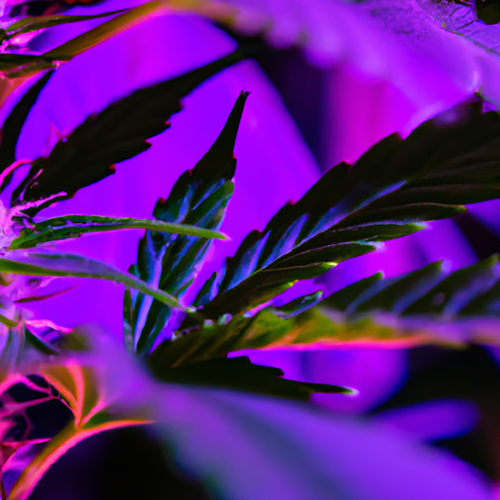
First, check if a sound air filter system is installed correctly in your room. By doing this, you can ensure that no dust or other toxins penetrate your surroundings and endanger the health of your plants. Additionally, ensure that your grow room's temperature stays between 68°F (20°C) and 77°F (25°C). Your plants could grow slowly or even perish if it becomes too hot or cold.
Additionally, you should spend money on a proper ventilation system to allow stale air to exit and fresh air to enter the area as needed. Without enough ventilation, humidity levels can rise quickly, producing rotten buds and low overall yields. Temperature stability and odor reduction are aided by an adequate exhaust fan with carbon filters installed in the grow chamber.
For the best results when feeding your plants throughout their life cycle stages all year, choose appropriate nutrient solutions for each approach separately, depending on whether you're utilizing soil or hydroponic systems like DWC (Deep Water Culture).
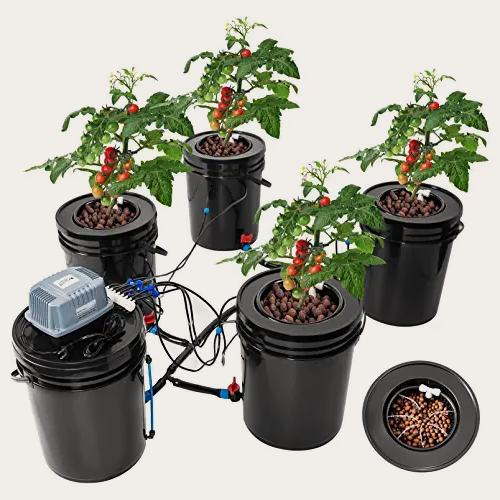
Finally, take preventative measures against pests by purchasing traps as needed and ensuring containers are sealed tightly so bugs cannot enter them quickly or, worse yet. The key here is pest avoidance since pests can swiftly wreck otherwise healthy crops if not dealt with promptly enough before the harm becomes irreversible owing to an excessive number of infestations already existing inside one's indoor garden area. Hitch a ride home with you after visiting friends who may have gardens outside their homes where these critters might lurk around, waiting unassumingly.
You are following these instructions before starting any home indoor cultivation project. Whether cloning mother plants already grown outdoors or creating a new grow from seedlings purchased online or in-store. You should be able to start producing quality marijuana flowers as soon as possible with the least hassle and effort once everything else has been taken care of appropriately beforehand during the preparation phase.
How to Create an Optimal Environment for Growing Cannabis
Cannabis cultivation may be incredibly fulfilling, whether you do it for a job or just as a pastime. However, growing cannabis successfully requires more than just supplying water and light; if you want the best quality and yields, you must provide your plants with the best environment. When you grow your plants, you have more control over their effects, strength, and aroma. You can also ensure they are not exposed to dangerous chemicals during commercial production.
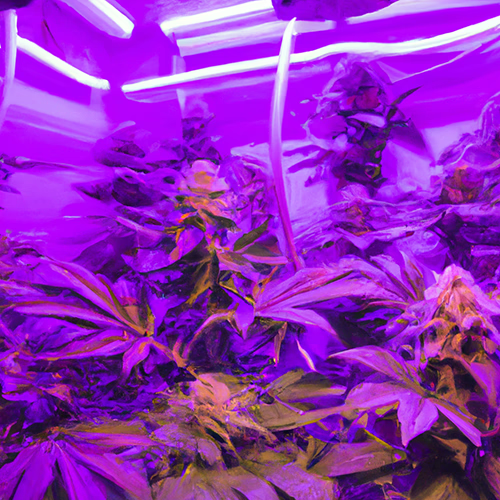
Choosing the proper production location is the first step in generating the best conditions for cannabis development. Generally, your grow room should be climate-controlled, airtight, and lightproof to avoid extraneous variables influencing results (to maintain consistent temperatures). Spending money on reflective pillars and walls is also worthwhile, enhancing light reflection in the area.
When growing marijuana, lighting is one of the most crucial factors to consider since, without adequate illumination, plants won't develop or provide high-quality buds. Additionally, keeping in mind that both bulbs require regular replacement during the season to maintain peak performance is critical.
Although growing cannabis successfully requires some effort, anyone can develop a thriving garden that yields top-notch buds by following these easy steps.
How to Maintain Proper Temperature and Humidity Levels
Cannabis plants need the right amount of humidity and temperature to grow. Relative humidity (RH) between 40-60% and temperatures between 70 and 85 degrees Fahrenheit (21 and 29 degrees Celsius) are optimum for thriving cannabis production.
Your plants will develop well if you carefully manage the temperature and humidity in your growing space. Low temperatures limit development and reduce metabolic activity, while high temperatures could make the plant overly dry. While too little moisture might weaken the plant and prevent it from flowering correctly, too much humidity can cause fungal diseases like powdery mildew or root rot.
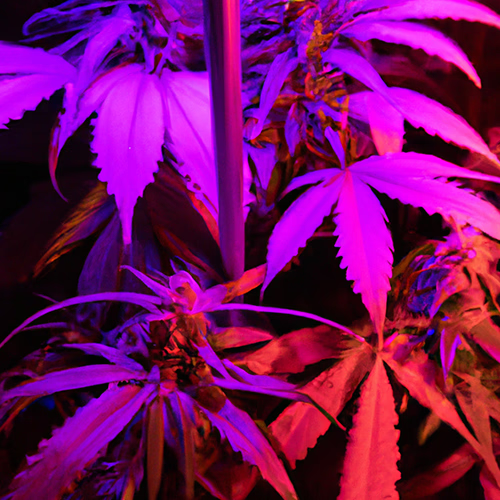
Various temperature control options exist depending on the size of your grow room. If your area is large, consider installing a heat pump or air conditioner to maintain a steady temperature throughout the day. Instead of solely relying on natural convection currents to manage temperatures in smaller spaces, utilizing fans with changeable speeds is another alternative for generating airflow that helps regulate temperatures more evenly. Additionally, adding insulation to the areas around windows and doors can keep the interior at its ideal temperature without manually modifying the settings.
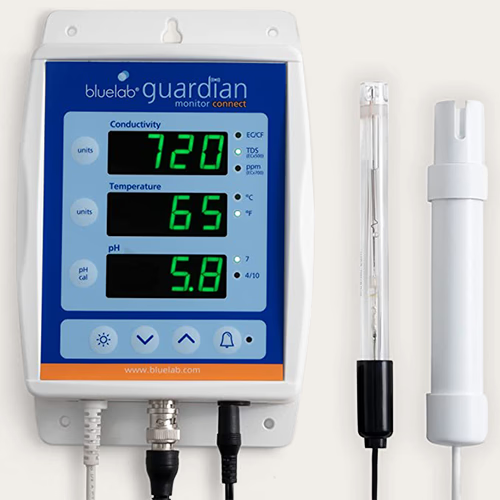
Growers should be able to create ideal climates conducive to healthy plant development year-round regardless of seasonality fluctuations outside home base operations by paying attention to both temperature and humidity readings inside their grow room at all times. Whether via digital thermometers/hygrometers placed around space or more sophisticated monitoring systems. Precision climate management is well worth the work once the results start to come in since, when done correctly, this ensures maximum yields at harvest time.
How to Set Up a Lighting System for Indoor Growing
A lighting setup providing cannabis plants with enough light to promote growth and flower production is necessary for indoor cannabis cultivation. To get the most out of your cannabis crop, you must set up the proper lighting system, which might be challenging.
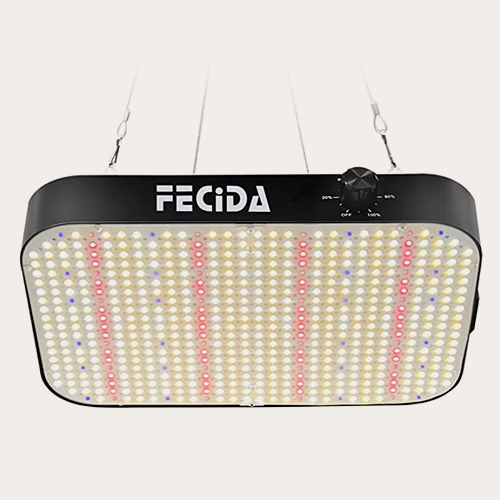
There are many possibilities depending on whether you pick natural or artificial lighting sources. Any form of lighting you choose should give full spectrum lighting, which means that all visible light hues should be emitted by the bulb for photosynthesis to proceed at its fastest rate. Home growers frequently use LED lights because of their energy efficiency, while HID bulbs offer more intense coverage over more expansive areas but demand more power output.
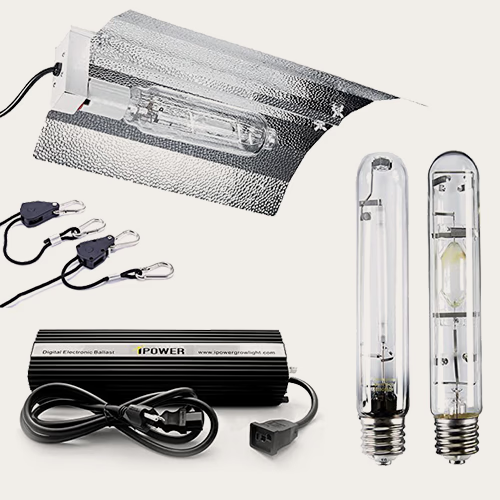
Next, consider the amount of space your grow room has. Fluorescent tubes or LED strip lights may work well if you have a small space because they take up less room than a standard HID system. On the other hand, HID systems may offer better coverage and, thus, higher yields if your grow room is more significant because they produce more powerful illumination over a wider area than other types of lamps.
It's time to figure out what wattage will be necessary to promote healthy growth from your plants during each stage of development (vegetative/flowering) once you've selected which type of light most suits your needs.
When using HID systems, most growers often use 400–1000 watts per square meter, whereas smaller grows may need 250–400 watts per square meter depending on the size of your grow room and desired outcomes.
For LED systems, slightly lower wattages (200-500 watts) should be adequate.
Although this relies significantly on the individual model and variables like ambient temperature, etc., conduct the necessary research before making buying selections.
When setting up a lighting system for indoor cannabis cultivation, it's also important to consider air circulation because if heat created by lights is not correctly controlled, it can result in issues like leaf burn or wilting. Ensure enough airflow around each lamp to prevent stagnant pockets from forming around hot spots generated by high-wattage bulbs, which could harm fragile leaves or blossoms on taller plants nearby. This will ensure that temperatures remain consistent throughout the day and night cycle.
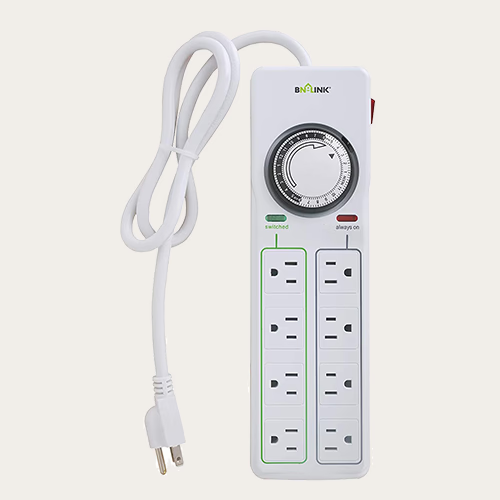
Finally, after everything has been installed correctly, remember to set timers to switch on and off lights every 24 hours by the stage of development your plants are in (i.e., seedlings vs. vegetative vs. flowering). This lowers electricity costs while helping to keep stable lighting settings. Setting up an efficient indoor lighting system doesn't have to be difficult with little planning; bear these suggestions in mind to get the most out of your crop.
How to Establish a Nutrient Schedule to Maximize Yields
Cannabis may be grown indoors under controlled conditions, yielding the highest-quality harvest. You'll also need to pay closer attention to nutrient management to increase yields. A fertilizer regimen can assist in guaranteeing that your plants receive all the nutrients they require for healthy growth and optimal yields, which is essential for indoor cannabis cultivation success.
The first step in creating a nutrient schedule is determining how much fertilizer each plant will require. Before adding anything to the mixture, it's vital to determine what amount works best for your specific strain or cannabis because varying amounts of nutrients may be required depending on the growth stage.
In addition, depending on your feeding schedule, if you're using organic fertilizers or soil amendments like compost or worm castings, you should add them at least once every two weeks during the flowering stages and throughout the vegetative growth.
Along with the amount of fertilizer you should apply each time, the frequency of application should also be considered. In general, it is advised that cannabis plants receive nutrients every ten days in the vegetative stage and then every 5-7 days when they are in the flowering stage. However, this can vary slightly depending on particular strains and individual grower preferences, so do some research before committing yourself one way or the other.
Finally, considering fertilizer application time is crucial, especially for indoor plants. Overfertilizing can have serious adverse effects, so always read directions and adhere to them closely. Additionally, watch out for any signs of nutrient burn, such as yellowed leaves, which may signal that too many fertilizers were administered too quickly (or insufficient water). If you have these symptoms, stop immediately until everything is normal.
Remember, fertilizer isn't food per se. It's a vitamin for your plant. If your plant doesn't look healthy - don't add fertilizer. It not just won't help and most likely will make things worse.
To encourage cannabis plants to produce flowers, nutrition is also essential. After germination, adequate fertilization should start as soon as possible and continue through all stages of growth until harvest. However, during the early vegetative stage, nitrogen should be increased while phosphorous should be held steady or slightly increased depending on the type of soil used. Reduce nitrogen levels gradually while gradually boosting potassium levels over several weeks before reaching the entire bloom phase and switching from veg to floral mode.
Investing some time in understanding precisely what fertilizing regime would work best with whichever strain(s) you are cultivating. Because setting up an efficient feeding plan will help increase yields while guaranteeing optimal health and vigor within your crop.
How to Stimulate Flowering in Cannabis Plants
Ensuring that plants generate the most blooms possible is one of the primary objectives of every cannabis producer. Understanding how to encourage flowering in cannabis plants will help you do this. Here, we'll go through a few pointers for doing this successfully.
Controlling temperature and light levels is crucial for encouraging cannabis plants to blossom. The photoperiod, or the daily hours a plant receives light, must be strictly regulated for effective development and flower production. The plant requires 18 to 24 hours of sunlight each day for vegetative growth, but when it comes to flowering, 12 to 14 hours of uninterrupted darkness is necessary; without this schedule, plants won't flower. For the best results, it's also crucial to maintain temperatures between 68 and 86 degrees Fahrenheit (20 and 30 degrees Celsius) throughout the vegetative and blooming phases.
Attention: make sure that during the dark period, it is dark indeed. Any amount of light can break the cycle and cause hermaphrodism in plants, which can ruin the whole batch.
These recommendations can help anyone wishing to optimize the output potential of their marijuana garden. Growers will be rewarded with a bountiful crop if they exercise sufficient control over temperature and lighting cycles, nourish their plants, and smartly prune them.
How to Prune Your Plants to Enhance Growth Patterns
An important cultivation method for cannabis plants is pruning. This procedure encourages the creation of new buds, improves plant growth patterns, and raises yield. You can strategically prune your cannabis plants to maximize their growth rate and quality by regulating how much light reaches each branch or leaf.
Choosing which branches or leaves should be removed is the most crucial stage in trimming your cannabis plant. Generally, the buds formed on lower-growing branches are inferior to those on higher-level attachments that receive more direct sunlight. Therefore, removing any lower-growth branches obstructing light from reaching the plant's top portions is recommended. Removing dead foliage can also assist in producing flower clusters by improving air circulation, giving them more space for healthy expansion, and enhancing nutrient uptake from both soil and hydroponic systems.
Another pruning method to consider is topping if you want further to improve the development patterns of your cannabis plant. Topping entails removing the main stem's leader shoot, or the very top node, also known as the "apical meristem," to induce the growth of two lateral shoots, or "colas," in place of the original core stem. By promoting even levels of canopy coverage at various heights throughout your entire crop canopy, topping encourages bushier plant structure by generating multiple growing sites. Additionally, it increased bud production because all nodes have equal access to light regardless of their position on the stem or branch; this increases photosynthesis efficiency and provides greater yields overall, something every grower looks forward to.
When done correctly, however, taking note that topping needs to be done early enough in a plant's life cycle can cause imbalanced nutrient uptake leading up to harvest time. It results in poor-tasting buds due to improper flowering times, among other issues - so make sure you understand what stage(s) during vegetative growth would be suitable for such techniques before attempting them.
The last type of pruning is called LST (low-stress training), which uses string, wire, etc., to wind around stems gently and leaves to control directionality rather than physically cutting into living tissue as traditional methods do. This process works best when used soon after germination and repeated throughout the vegetation stages until desired results are achieved. It is ideal for those looking to maximize space within their garden confines.
Pruning methods can be beneficial when attempting to stimulate more significant flower production in your cannabis crop. By removing extra foliage, such as fan leaves or any other unnecessary parts, from around developing bud sites, you'll help promote better air circulation, directly resulting in larger harvest yields. If done correctly, topping off and defoliation procedures may also be advantageous, so try several approaches until you find one that works well for your particular strains.
Overall, using some pruning strategy for cannabis crops has many advantages, such as increased yields, improved aesthetics, and better product quality. Just be careful when choosing the techniques that are the right fit based on personal preferences and crucial stages within the lifecycle being cultivated before successfully putting them into practice and reaping the benefits.
How to Manage Pests, Diseases, and Mold Problems
Controlling pests, infections, and mold is a top priority for many gardeners when cultivating cannabis. These problems may harm the plants or hurt the finished product's quality. Fortunately, several actions can be performed to lessen these issues and ensure the harvest is successful.
Preventative measures are the initial step in managing diseases and pests. This involves making every effort to maintain your grow area tidy and clutter-free. To prevent the transmission of any dangerous diseases among your plants, you should also work with sterilized tools, such as pruning shears. Last, watch for symptoms of infection or infestation in your plants, such as discoloration or patches on leaves or stems, and act appropriately if any problems are found.
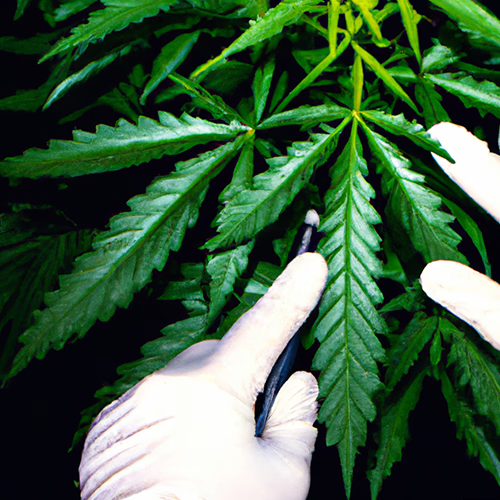
Depending on the pest or disease in question, chemical controls may be required if an outbreak does happen despite preventive measures being implemented. Several organic approaches that are frequently more environmentally friendly than synthetic chemicals may be used. Additionally, ladybugs and other biological control agents can assist in maintaining insect populations under control without introducing harsh chemicals into your garden. Before using treatments, always carefully check the labels on any items you plan to use.
Controlling mold growth is crucial because this fungus can seriously harm plants and people if found in harvested materials for consumption or sale. Maintaining ideal environmental conditions, such as temperature and humidity levels, and ensuring adequate airflow throughout the space, will help prevent mold growth. Dehumidifiers during especially humid seasons may also be necessary to prevent excess moisture buildup, promoting fungal growths like mold spores.
When cultivating cannabis indoors, humidity must also be adequately controlled because excessive moisture might eventually lead to mold growth or bud rot. For roots to have appropriate access to water vapor through transpiration processes in soil media beds or aeroponic systems alike. Farmers must utilize high-quality dehumidifiers that maintain RH levels above 40% during vegetative cycles but below 60% during blooming stages. Growers may need to adjust their dehumidifier settings accordingly during extreme changes in environmental conditions indoors versus out. Depending on external influences such as ambient weather changes outside your grow area and any additional heating elements used internally, like HID lighting fixtures.
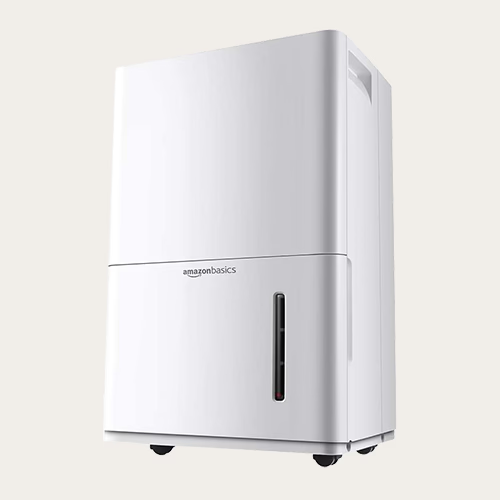
If there are any apparent indications of contamination, it is advised to remove or destroy any contaminated materials immediately. In addition, all surfaces that are within reach should be thoroughly cleaned and disinfected, including the walls. This should be done using EPA-approved anti-fungal products, and the area should be carefully monitored to ensure that all traces have been completely removed.
How to Harvest, Cure, and Store Your Cannabis Buds
An essential stage in producing high-quality marijuana is harvesting, curing, and storing your cannabis buds. It can improve your crop's strength, flavor, and scent if done correctly. In this post, we'll go over the procedures to guarantee a good harvest and give advice on how to handle and store just-picked buds safely.
Determining when plants are ready for harvest is the first stage in the cannabis cultivation process. Most trichomes, which are tiny crystals on the surface of the cannabis flower, should be cloudy or milky white if they are to be considered fully mature and ready for harvest.
You can start shearing or cutting your plants down once you're sure they've reached their ripeness peak. If leaves or stems are found on flower clusters during harvest, remove them because the finished product shouldn't contain them.
After all desirable flowers have been harvested, it is time to cure them to store them. To allow excess moisture to drain from buds without compromising flavor or potency due to heat exposure from drying too quickly, buds must be exposed gradually over weeks (or months, depending on preference).
Place the buds in airtight containers, like mason jars, with humidity packs inside. The humidity packs will assist in controlling the interior moisture levels while allowing some airflow through the lid-sealing system of the container.
Ensure that these containers are kept out of direct sunlight and away from severe temperatures (preferably between 65 and 75 degrees Fahrenheit, or 18 - 23 °C). Open each jar sometime throughout the curing process after around 4-6 weeks (roughly once per week).
Finally, once the desired quantity has been obtained, store the marijuana in appropriately sized glass jars with tight-fitting lids to create an airtight environment that prevents contamination from the outside from entering the container while still allowing enough air circulation to stay intact over time. Due to its packaging design, this method is ideal for preserving high-quality products without sacrificing flavor or potency levels for extended periods.
Containers should be kept out of direct sunlight, such as windowsills, and away from any exterior moisture buildups like the condensation that could cause mold growth inside the jar. Nobody wants this to happen to their priceless supply.
Additionally, remember that different strains require different lengths of curing time before being ready for consumption. As a result, experiment with a few extra batches to find the best method for growing and consuming a particular strain for yourself and those around you who enjoy indulging in herbaceous delights.
No matter how much expertise you may have in manufacturing top-shelf marijuana products previously, harvesting, curing, and storing your cannabis buds is crucial for doing so correctly every time. Remember that even the most minor details can significantly impact this situation.
Extra care and attention offered in the early stages of the growing process directly affect the product's final quality. Therefore, don't take shortcuts; instead, complete the task correctly the first time and optimize your rewards for now and in the future.
